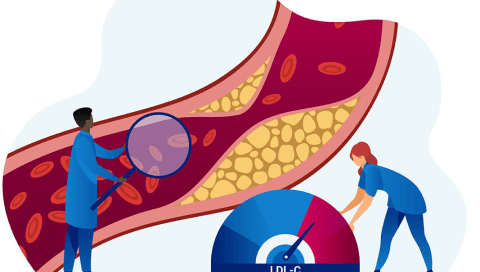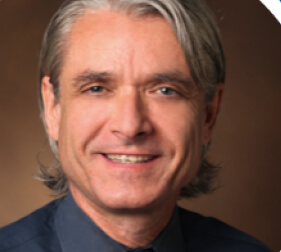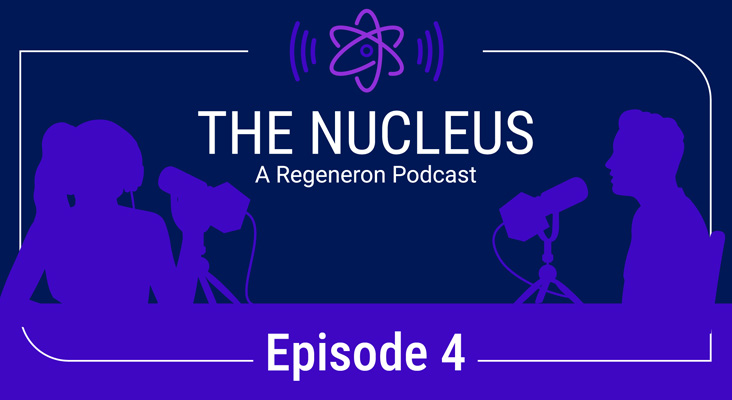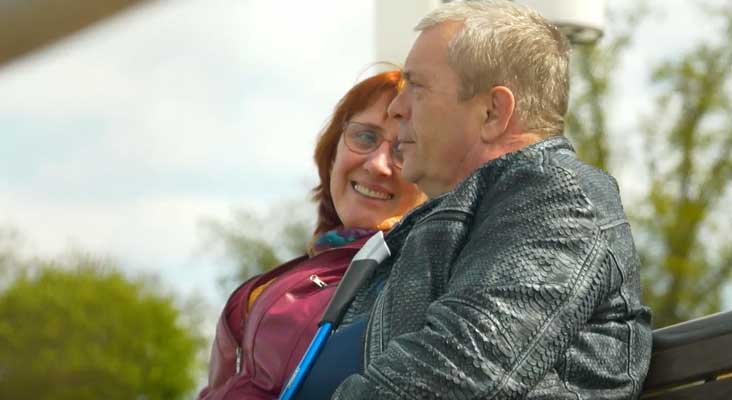Research & Preclinical Development
It Takes a Village
June 01, 2022
Discoveries that led to a treatment for dangerously high cholesterol
By: Viktoria (Vika) Gusarova, PhD, Senior Director, Obesity, Metabolism & Muscle Diseases
Sergio Fazio, MD, PhD, Scientific Council Chair, Cardiometabolic Diseases

Viktoria (Vika) Gusarova and Sergio Fazio discuss efforts that paved the way for a homozygous familial hypercholesterolemia (HoFH) treatment.

Viktoria (Vika) Gusarova: When it came time to choose my post-doctoral training, I knew that I wanted to work in a therapeutic area that made a difference. At that time, and still today, despite many treatments available, cardiovascular disease remains the top leading cause of death in the U.S. and represents a major unmet medical need.1,2
Alongside a focus in cardiovascular disease, after finishing my training, I wanted to find a place that enabled me to make discoveries that are then translated into drug development. I joined Regeneron in 2008 where science serves as our north star and I can channel my energy in applicable science to make medicines that really make a difference for people.
By the time I joined Regeneron, Sam Davis of Discovery Research and George Yancopoulos, our Chief Scientific Officer, had discovered the ANGPTL family of proteins. While our team worked on several members of this family, our efforts soon zeroed in on ANGPTL3 and the role it plays in cholesterol metabolism.
Low-density lipoprotein cholesterol (LDL-C) or “bad” cholesterol is cleared from the body by LDL receptor (LDLR). However, when LDLR is mutated or absent, LDL-C accumulates in the body at dangerously high levels, which is what happens in individuals with Homozygous Familial Hypercholesterolemia (HoFH), an ultra-rare genetic disorder. It’s also why many of the affected individuals respond poorly or not at all to a number of existing cholesterol-lowering medications that work through the LDLR pathway, leaving them with an uncertain future.3
Our preclinical research found that when the ANGPTL3 gene is deleted or mutated, it leads to reduced levels of cholesterol, and specifically LDL-C. We hypothesized that blocking ANGPTL3 with a monoclonal antibody therapy could be a promising approach to treat conditions with elevated cholesterol, like HoFH. We identified this pathway and validated it, moving this therapy into clinic. Together multiple teams at Regeneron – truly a whole village – put forward an extraordinary effort to develop a first-in-class medicine to treat HoFH, which works by blocking ANGPTL3 to lower LDL-C levels, independent of the LDLR pathway, making a huge impact for patients.

Sergio Fazio: Like Vika, I too felt a calling to cardiovascular sciences. I have always known that I wanted to be both a caring physician and a committed scientist, and eventually made it my professional life’s work to define and advance the field of preventive cardiology, whose foundation is cholesterol management.
After my medical training in endocrinology and metabolism, I started a Ph.D. program at the University of Siena in Italy and got involved with a World Health Organization (WHO) program that looked at trends and determinants of cardiovascular disease (known as WHO-MONICA). As part of that program, I traveled with a university team to the Italian hamlet of Campodimele, which is halfway between Rome and Naples. In this tiny village, the residents lived well into their old age, many had very low cholesterol levels.
Researchers initially credited their longevity to their diet, the fresh air and simple lifestyle but it was later found to be the result of a genetic mutation in ANGPTL3. Although we didn’t have the tools at the time to identify this, our research was an important step in understanding why some people have naturally low cholesterol levels.
Following a career in academia, I came to Regeneron in 2020, which I consider the “university” of biopharma companies because of the deep commitment to early-stage research that informs biological understanding. In my current position, I’m able to apply my decades of experience in research to make a difference in drug development and the cardiometabolic scientific landscape.
It’s this university-like setting that fuels discovery. Vika and the Regeneron team championed the company’s approach to follow the science wherever it leads, ultimately helping this ultra-rare disease community (HoFH). Rare genetic diseases sometimes have a connotation of being “untreatable” but each day our discoveries can lead to breakthroughs that help patients with high unmet need.
References
- Centers for Disease Control and Prevention. (2020). Leading Causes of Death. Retrieved from https://www.cdc.gov/nchs/fastats/leading-causes-of-death.htm
- Centers for Disease Control and Prevention. (2000). Deaths: National Vital Statistics Reports - Deaths: Final Data for 1998. Retrieved from https://www.cdc.gov/nchs/data/nvsr/nvsr48/nvs48_11.pdf
- Family Heart Foundation. (2022). Homozygous FH. Retrieved from https://thefhfoundation.org/familial-hypercholesterolemia/homozygous-familial-hypercholesterolemia
More Regeneron Stories


